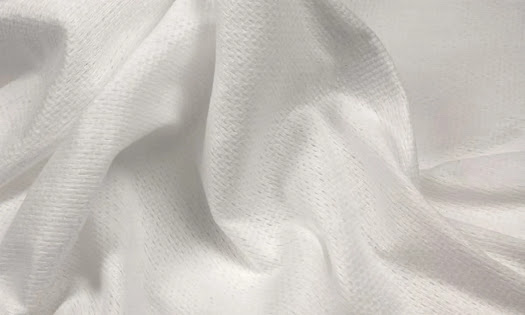What is the difference between Spunlace Non-Woven Fabric and Spunbond Polypropylene?
Spunlace is known as a non-woven fabric that holds the checked web water jets. It uses the innovative hydroentangled holding framework where high speed and high tension of water is discharged from situated spouts onto a free strands trap. Here, the supporting belt or drum entraps with the water stream power and twists the filaments of the web altogether.
Likely, it creates a strong web with the web’s filaments. A non-woven surface is created in the cycle with genuine properties of high mass, delicate quality, phenomenal strength, stretchiness, drape ability, and depending on the utilized fiber, woven materials or conventional waved materials. The gooey and polyester are used in different degrees of strands.
Spunlace Non-Woven Fabric and Spunbond Polypropylene are unique fabrics that have more demand in the medical, healthcare, and other industries. Both are created using the same manufacturing techniques but have different uses and characteristics. In this post, clear differences have been explained by focusing on the manufacturing process, use of polymers, bonding process, uses and benefits.
What is the manufacturing process involved in Spunlace Non-Woven Fabric and Spunbond Polypropylene?
Many stages are involved in the creation of both Spunlace Non-Woven Fabric and Spunbond Polypropylene fabrics. The manufacturing process involves extrusion, spinning, filtering and cooling, web formation, drawing and bonding. After that, the extruded spun fibers are settled onto a belt. Next, fibers are separated by electrostatic charges or air jets.
How are Polymers utilized in Spunbond Polypropylene and Spunlace Non-Woven Fabric?
The Spunbond Polypropylene is known as the commonly utilized polymer in non-woven textures due to its subsequent low cost and high return. Additionally, when the fibers are recycled or reused by being re-pelletized, it acknowledges more ecological advantages and minimal expenses. On the other hand, Spunlace Non-Woven Fabric frequently blends polyester, cotton, or gooey with the wood mash.
What is the bonding process involved in Spunbond Polypropylene and Spunlace Non-Woven Fabric?
The main difference in the bonding process can be observed by focusing on the manufacturing cycle of Spunlace Non-Woven Fabric and Spunbond Polypropylene. Without the bonding step of the process, these products would not have any mechanical resistance. The spunbond polypropylene uses calendering in the bonding process, where heated rollers are used to bond calendered fibers.
Spunbond polypropylene also uses ultrasonic energy by welding the product pin sonically and creating stitched products that better suit the mattress covers. Similarly, non-woven fabrics use either thermal, chemical, mechanical or hydroentanglement in the main bonding processes. Moreover, Spunlace Non-Woven Fabric uses hydro entanglement in the bonding process, where the fibers are interlinked, and the web is entangled through different rows of water jets at high pressure.
What are the uses of Spunbond Polypropylene and Spunlace Non-Woven Fabric?
Spunbond polypropylene is considered to be an adaptable item that is highly used for different purposes such as;
• Pad linings
• Expendable workwear
• Protection materials
• Sleeping pad covers and bed bases
• Upholstery linings
• Cleanliness items or hygiene products
• Cushion linings
• Expandable table covers
On the other hand, Spunlace Non-Woven Fabric is frequently used for products within the health or medical industry due to its soft appearance and feel. The well-being or clinical industry may use this fabric for;
• Surgical gowns
• Disposable bedding
• Baby wipes or wet wipes
What are the benefits of using Spunbond Polypropylene and Spunlace Non-Woven Fabric?
Spunbond Polypropylene and Spunlace Non-Woven Fabric have similar benefits in terms of durability, low cost and strengths. However, both differ from each other with some benefits to each item. So, what are the benefits you can expect to get by using spunbond polypropylene? Let’s check out.
• High-temperature resistance
• Excellent moisture resistance
• Recyclable and versatile
• Durable and strong
On the contrary, Spunlace Non-Woven Fabric has some unique benefits to each item, including;
• Uniform appearance and high density
• Durable and absorbent
• Good drape ability and soft handle
Apart from this, you must also understand that both fibers go through a laminating process. When both fibers are laminated with a PE film, it can prevent the penetration of bacteria and fluids, which makes the item more useful within the healthcare or clinical industry. After understanding the differences between Spunbond Polypropylene and Spunlace Non-Woven Fabric in terms of the manufacturing process, use of polymers, bonding process, uses and benefits, you can easily identify which fiber you need for the specific purposes of your industry.



Comments
Post a Comment